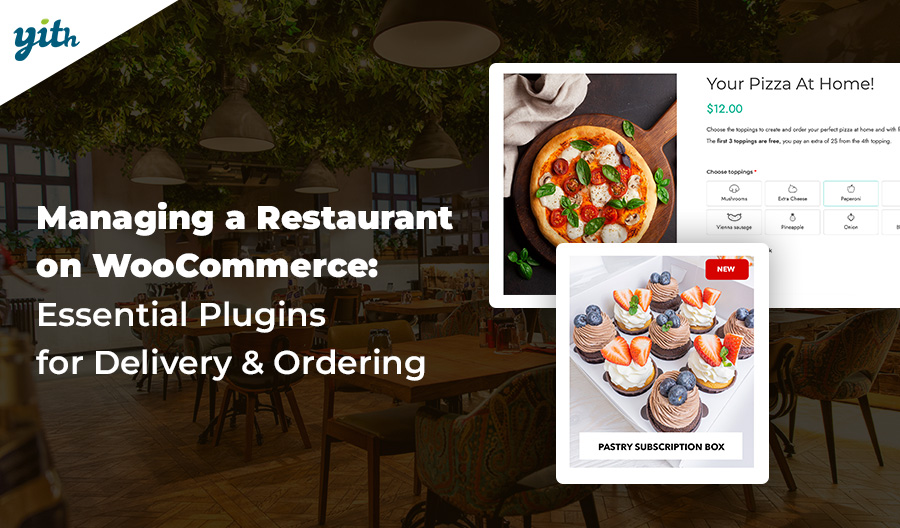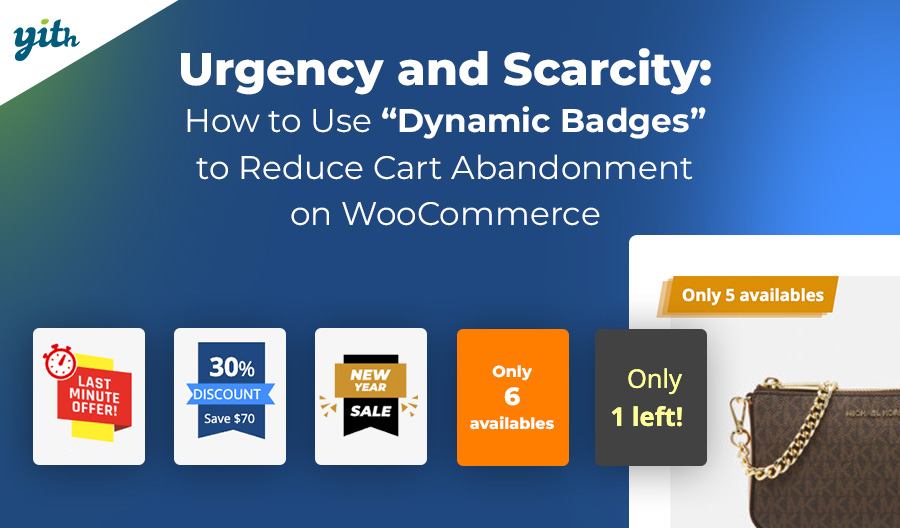Even though there are still businesses operating in a fairly limited area, globalization is increasingly expanding the customer base of online stores.
These days, it’s quite common for eCommerce products to cross geographical borders and reach global customers. When that happens, there are a few things to keep in mind, like shipping costs and the various currencies your online store is showing.
In this article, we’ll go over why letting your customers pick their preferred currency is so important, how it can boost your online business, and the perks you can get. We’ll also go over how to set up a multi-currency system on your eCommerce site built with WordPress/WooCommerce.
Table of contents
Why Multi-Currency is Crucial for Global eCommerce
You’ve got your online store up and running, your shipping zones are all set, and your product delivery system is top-notch. But there’s one thing you might’ve overlooked: multiple currencies.
If your store uses a popular default currency, it’s easy to overlook different currencies. However, this could end up costing your business.
Let’s look at why you should implement a multi-currency feature:
- Reduce shopping cart abandonment – It’s a real problem for all online stores. It’s estimated that about 70% of items added to a shopping cart are left behind without being purchased, which is why more and more store owners are looking for ways to reduce this percentage. These methods include making the checkout process easier, sending reminder emails, and a lot more.One of these solutions is enabling multi-currency systems to the portals. A study by Baymard actually found that 13% of users left a purchase because the store used a currency they didn’t understand.Using a different currency might confuse potential customers and make the site seem less professional, which raises questions about the store’s ability to reach customers so far away.
- Increase in conversions – Another popular search among sellers worldwide is related to increasing conversions (i.e., the percentage of users who become customers of the store). Industry leaders like Shopify say that showing prices in the customer’s currency can boost conversions by as much as 40%!
- A constantly growing market – As we discussed, geographical boundaries between different countries aren’t as important these days, especially in the online sales world. We’re talking about a global B2C market—particularly cross-border—that’s expected to exceed €4 trillion in 2025. It’s a big pie, and you should get your slice!
- Higher customer satisfaction and loyalty – It’s estimated that over 92% of international buyers prefer to use their own currency, and this has a big impact on making the purchasing process easier.
Selling internationally means you should accept payments in different currencies. This is good for your store and makes it more successful.
Let’s learn more about this world.
Essential Features for Multi-Currency eCommerce on WooCommerce
Have you decided to implement a multi-currency WooCommerce store, but don’t know where to start? No worries. You just need to use the right plugin.
There are a lot of online solutions that allow you to add this feature to your eCommerce site, so it’s important to know what to look for in these tools.
Here are some essential features for a WooCommerce multi-currency plugin:
- Option to enter multiple currencies – Even if you’re doing business in certain countries with specific currencies right now, you can’t predict how much your business will grow in the future. Why limit its potential now?
- Intuitive use – A good multi-currency plugin allows customers to easily switch multiple currencies and lets you place the currency switcher widget in different locations throughout your store.
- Updated rates – Since the currency’s changed, the product price will also change. A good plugin lets you have multi-currency transactions and automatically sync exchange rates with a bank’s rates, so you don’t have to keep checking historical exchange rate listings and losing money because of wrong exchange rates.
- Automatic change – Another really useful and popular feature is currency geolocation, which automatically changes the currency displayed to the customer based on their geographical location. This process gets rid of a step in the browsing experience, making everything smoother.
- Restrict payment methods based on currency – Some payment methods might not be suitable for international payments or specific currencies, so the plugin should allow you to choose which payment methods to make available based on the currency selected by the customer.
And a lot more. If you’re looking for a plugin that can do all this, we suggest the YITH Multi Currency Switcher for WooCommerce plugin.
We’ll go over the features and how to set it up quickly on your WooCommerce site.
How to Configure your WooCommerce Store with our Plugin
Once you install and activate the plugin, you’ll be able to access its advanced settings. In the control panel, you can add and enable as many currencies as you want to display in your store:
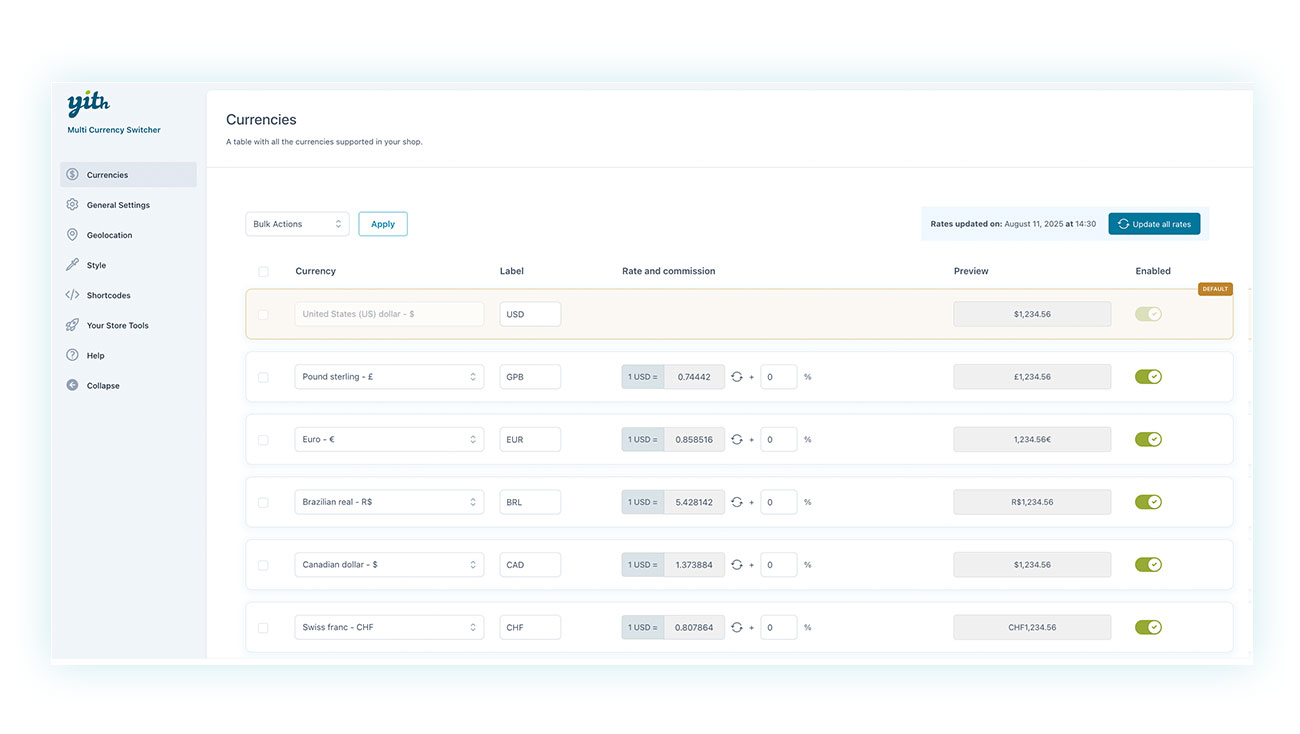
In the “General Settings” section, you can choose whether to enable manual or automatic exchange rate configuration. If you go with the automatic option, you can pick which institution to use for exchange rates (like the European Central Bank) and how often to update the rates for your online store:
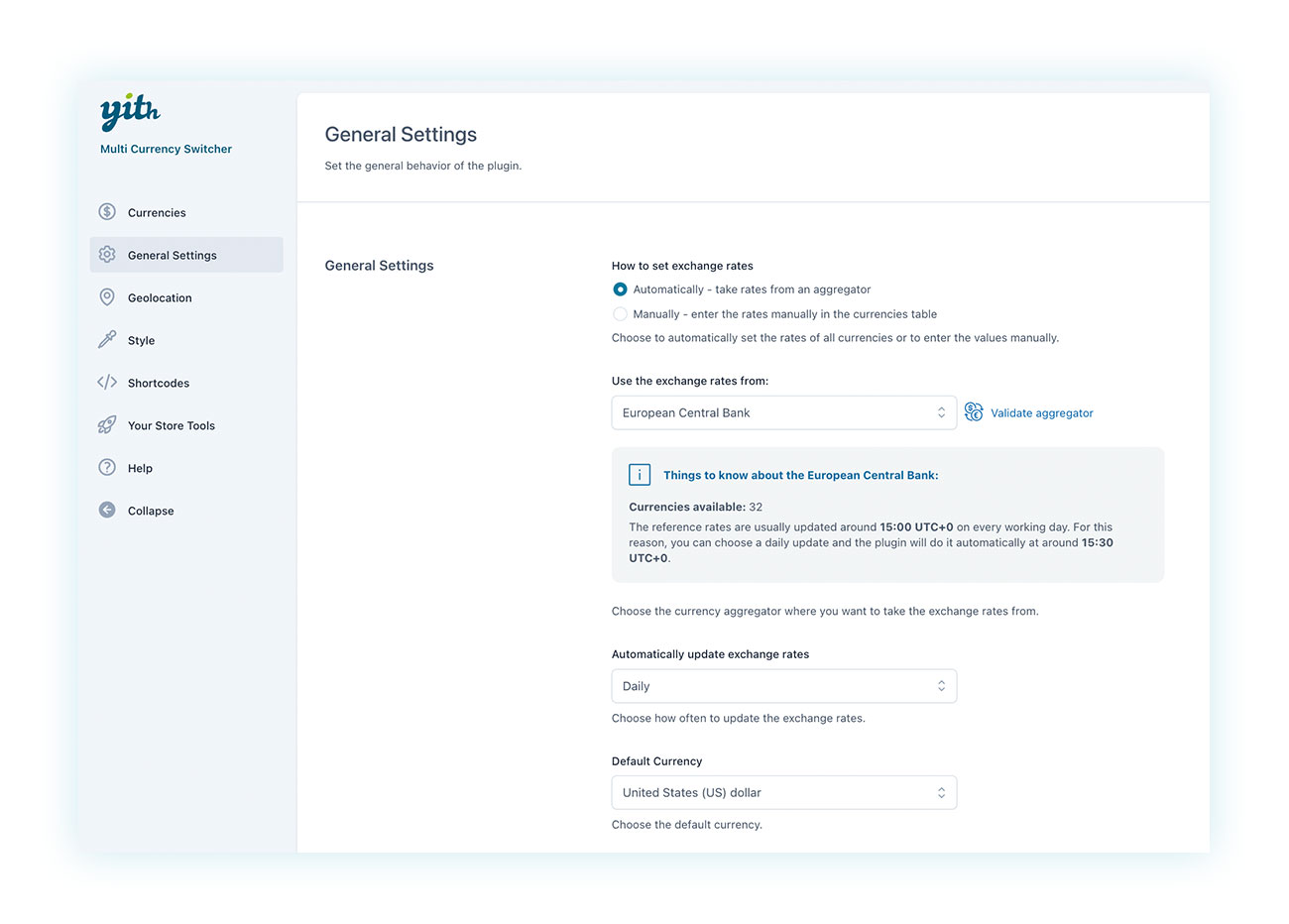
After configuring and setting up the plugin, you can display the currency selector in different areas of your store, such as the sidebar or top menu:
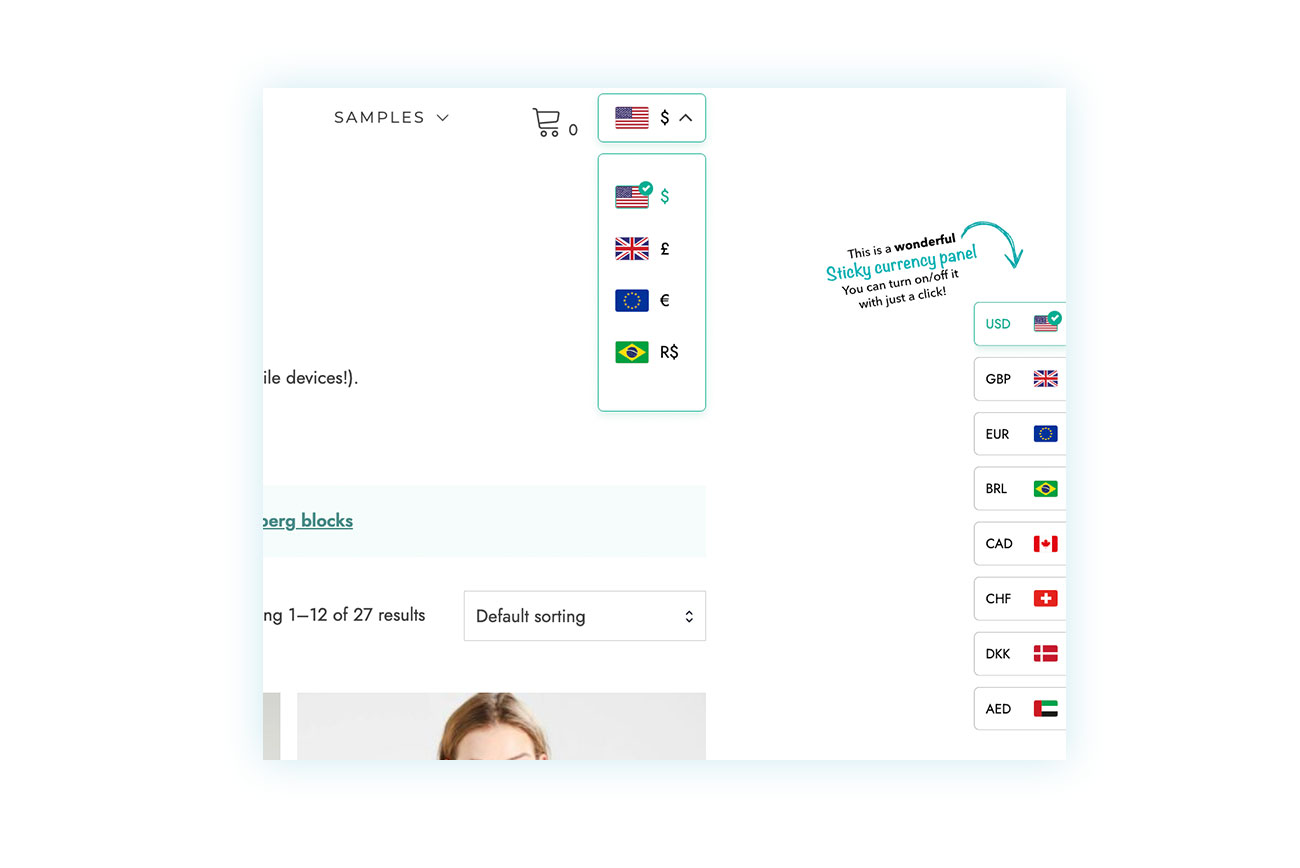
Or even within the product page, if you wish:
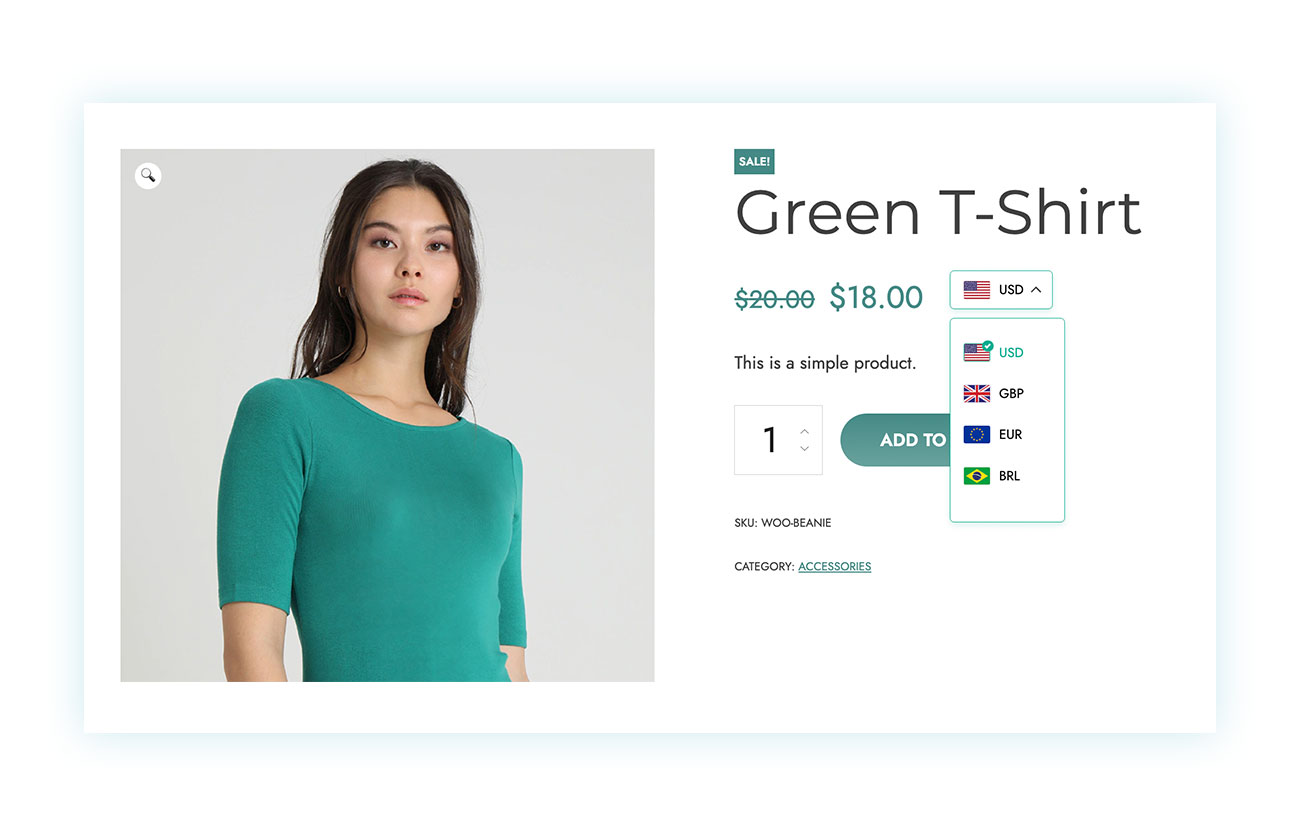
But that’s not all!
How to Personalize the User Experience with Geolocation
As we mentioned, a good plugin should include a geolocation system so that it can automatically change the store’s currency based on the country of the customer visiting it.
YITH Multi Currency Switcher for WooCommerce has this feature: in its side menu, you’ll find the “Geolocation” option, where you can enable or disable this feature and decide how it will behave:
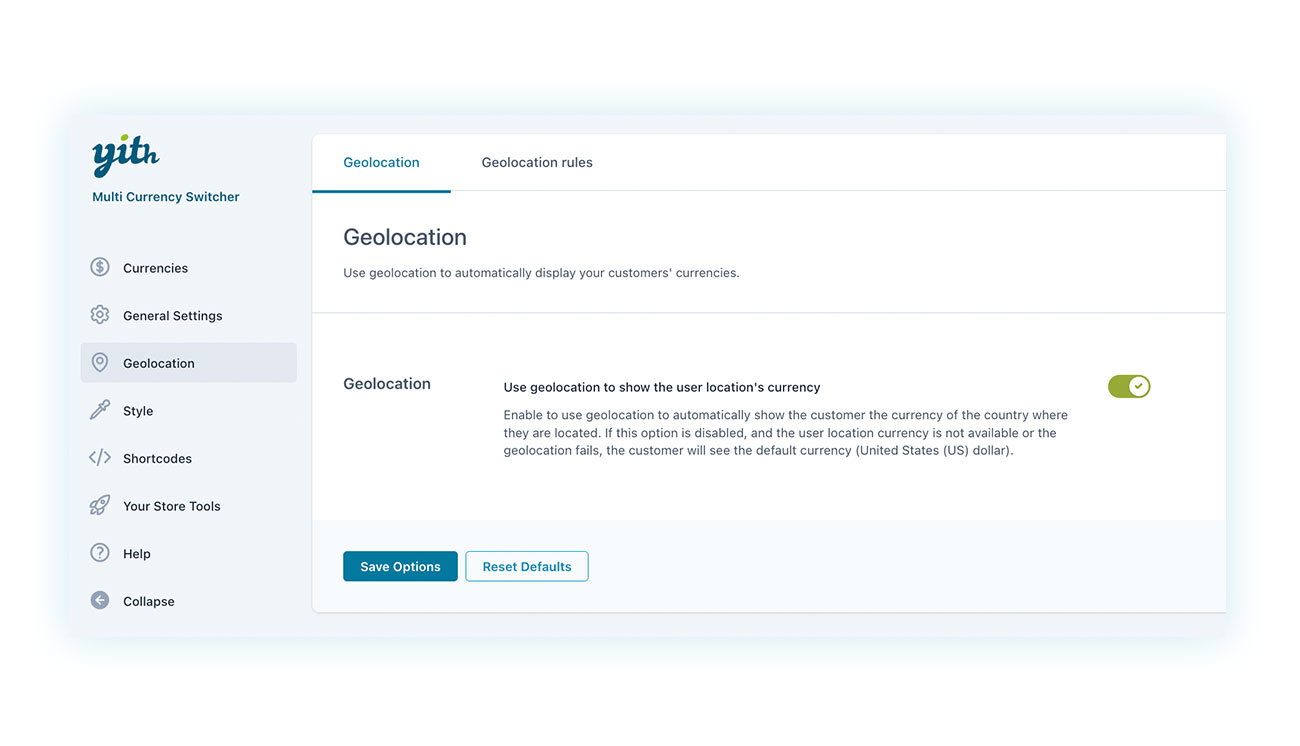
This gives you full control over the feature. If the customer’s country doesn’t have a currency available, the default will be shown instead.
Management of Currency-Specific Payment Methods
The plugin also lets you hide any payment gateways based on the currency the customer uses.
To do this, just go to the “General Settings” section and scroll to the bottom of the page. Here’s the item: There’s a “Payment Gateway” option where you can pick which payment gateway to hide for each currency.
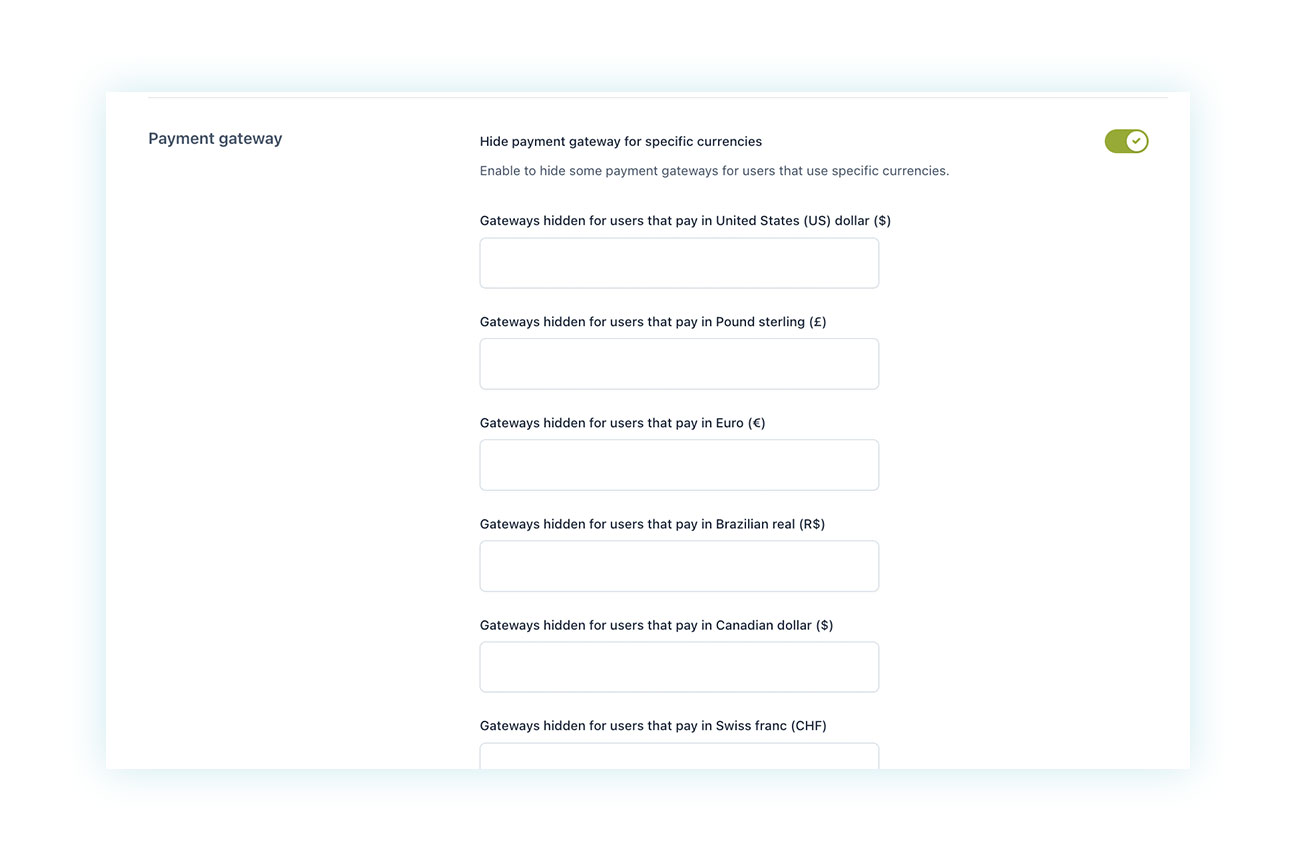
Conclusion
In a world where the lines between countries and between sellers and customers are getting more and more blurred, having a multi-currency system in your eCommerce is no longer just a convenience — it’s a must.
If you want to open your online store to a global audience, you need to speak your customers’ “language” (more and more online stores are introducing multilingual plugins for this very reason), including their currency.
It’s better for your brand if you show prices in the customer’s local currency. It makes them trust you more and makes the shopping experience simpler, more direct, and more professional. As we’ve seen, it can help you reduce cart abandonment, increase your conversion rate, and capture an increasingly larger share of the cross-border market, which is expected to exceed €4 trillion by 2025.
With tools like YITH Multi Currency Switcher for WooCommerce, integrating all this into your site is a breeze. The plugin has all kinds of cool features, like automatic rate updates, currency geolocation, custom payment gateway management, and more. It’ll make your store global in no time.
And on top of that, the plugin comes with continuous updates and technical support via ticket, so you’re never really alone in your online business.
So, here’s the deal: if you’re selling abroad (or thinking about it), don’t let a little thing like currency hold your customers back. Instead, use it to your advantage.


